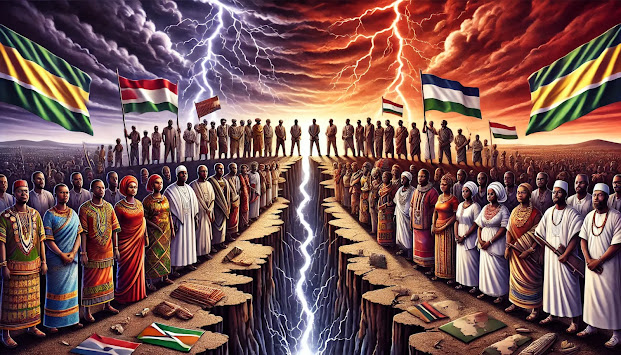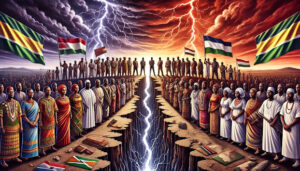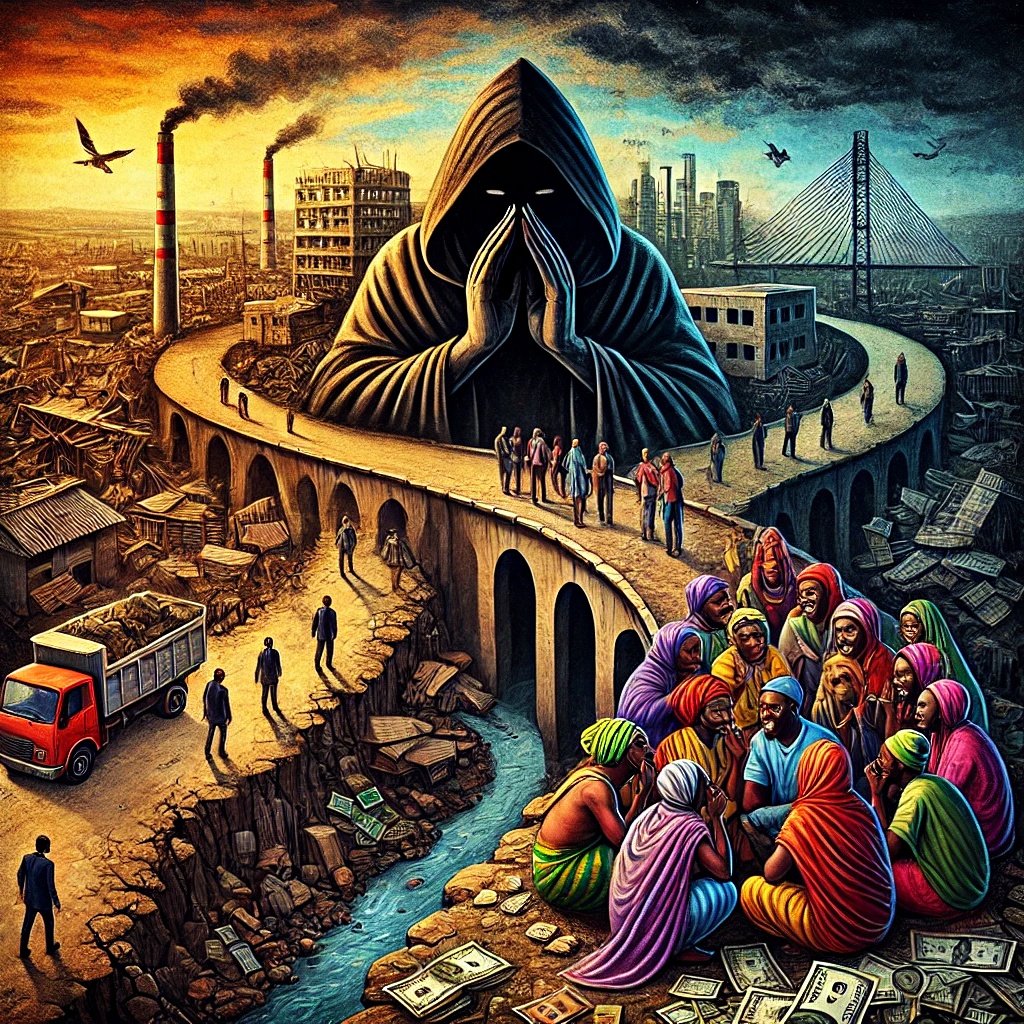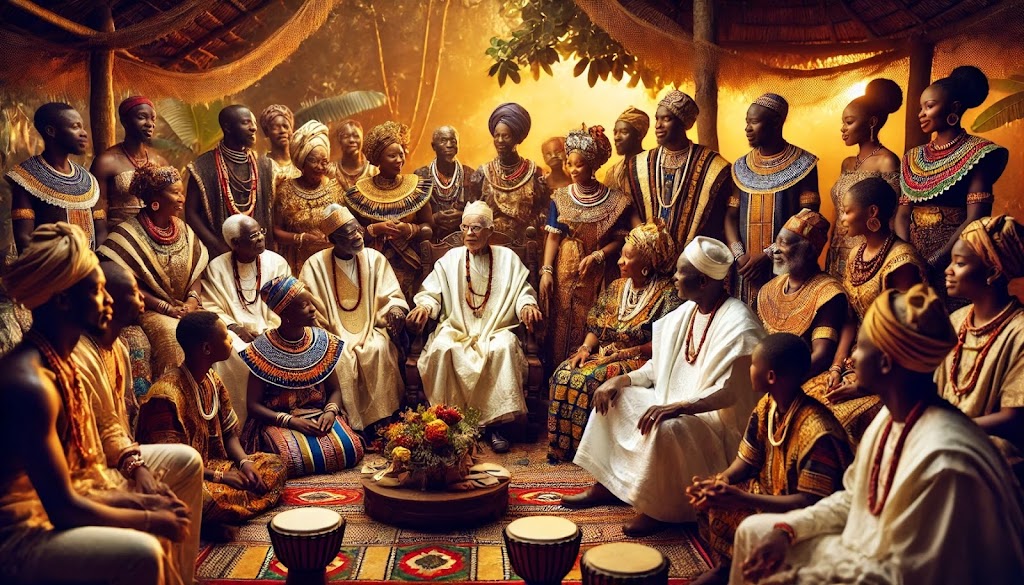Sierra Leone is a nation that embodies a
paradox of cultural unity and political fragmentation. Despite being one of the
most culturally and religiously homogeneous countries in Africa, the country
remains deeply polarized along regional and partisan lines. The dominant
Islamic faith and the Fulani-Mande cultural foundation create profound
commonalities among Sierra Leone’s major ethnic groups, including the Mende,
Temne, Limba, and Mandingo. Inter-ethnic marriages, the widespread use of
common surnames, and the overlapping linguistic traditions suggest that the
country should, in theory, have a strong sense of national unity. However,
political fragmentation has persisted as a significant challenge, sustained by
historical legacies, elite manipulation, and institutional weaknesses. Unlike
many African nations where ethnic and religious divisions are the main sources
of conflict, Sierra Leone demonstrates how political identity can override
cultural commonalities, fuelling instability.
Political polarization in Sierra Leone has
been reinforced through decades of historical, colonial, and post-colonial
political manoeuvring. The two dominant parties, the All People’s Congress
(APC) and the Sierra Leone People’s Party (SLPP), have historically entrenched
regional loyalties and reinforced a winner-takes-all system of governance. This
political culture has created an environment where electoral victories often
lead to the systematic exclusion of the opposition, heightening political
tensions and fostering long-term instability. To understand why these divisions,
persist despite a shared cultural foundation, it is essential to examine Sierra
Leone’s historical trajectory, the role of secret societies, the importance of
inter-ethnic surnames, and the ways political elites have strategically
manipulated these identities to maintain power.
The political divisions in Sierra Leone have
deep roots in the colonial governance structures established by the British.
The colonial rulers implemented a dual system of governance, in which the north
was governed through indirect rule—granting significant administrative power to
local chiefs—while the south and east were subjected to direct rule under
colonial officers. This system created significant economic and infrastructural
disparities between the two regions, fuelling political competition and
long-term rivalries (Bangura, 2015).
At independence in 1961, these colonial
divisions continued to shape Sierra Leone’s political landscape. The SLPP,
which had led the independence movement, was largely associated with the Mende-dominated
south and east, while the APC, founded in the 1960s, built its political base
in the predominantly Temne and Limba northern regions. Over the decades,
political power has oscillated between these two dominant parties, each
reinforcing regional loyalties and prioritizing its strongholds over national
governance.
The civil war (1991–2002) further aggravated
these divisions. While the war was driven by grievances related to corruption,
economic marginalization, and centralized governance, it was also heavily
influenced by regional factionalism. The Revolutionary United Front (RUF)
insurgency, initially framed as a rebellion against state corruption, became
deeply entangled in regional power struggles. Though the war ended in 2002, the
mistrust it cultivated between political actors has continued to shape
electoral politics and governance, making it difficult for the country to move
beyond regional partisanship.
Despite the deep political divisions, Sierra
Leone remains remarkably homogeneous in cultural and linguistic identity. One
of the strongest indicators of this shared heritage is the prevalence of common
surnames across ethnic groups. Names such as Koroma, Kamara, Conteh, Bangura,
Fofanah, and Sesay are widely used among the Temne, Limba, Mandingo, and Mende
peoples. These surnames have deep historical origins, tracing back to Fulani,
Senegambian, Konyaka, Malinke, and Gbandi-Loko migrations that shaped Sierra
Leone’s demographics.
The Koroma surname is particularly
significant. While commonly associated with the Limba and Temne, it is also
found among the Mende-speaking population. This widespread presence reflects
the extensive influence of Mande heritage across Sierra Leone. Historically,
the Koroma name has been linked to warriors, traders, and political leaders who
played crucial roles in both pre-colonial and colonial Sierra Leone. Its
presence across ethnic groups also suggests historical ties to the Mali and
Songhai Empires, which facilitated the spread of Mande culture, language, and
surnames across West Africa.
Similarly, the Fofanah surname, widely
associated with the Mandingo, Temne, and Mende, has strong Senegambian roots.
Many Fofanah families trace their lineage to Fulani-Mande Islamic scholars and
traders who migrated southward from Mali and Guinea into Sierra Leone. Their
integration into different communities over centuries led to the widespread
adoption of the Fofanah name across various ethnic groups. Many individuals
bearing the Fofanah name have historically played key roles in Islamic
scholarship, governance, and commerce.
The Sesay surname is another example of a
Mande-Senegambian name that has been adopted across multiple ethnic groups in
Sierra Leone. Like the Fofanah name, Sesay is historically linked to Malian and
Senegambian expansions, particularly during the height of the Mali Empire’s
trade networks. Families with the Sesay name were influential in establishing trade
routes, religious schools, and political networks, facilitating economic and
social integration across different regions. The name’s widespread presence
across various districts reinforces the idea that Sierra Leone’s ethnic groups
have long been connected through trade, migration, and intermarriage.
Beyond surnames, place names in Sierra Leone
also reflect Mande, Fulani, and Senegambian influences. The Koya region, which
exists in both Port Loko and Kenema districts, directly references the Mane
warriors who established strongholds in Sierra Leone and the broader Mano River
Union region. The recurring names Gbendembu (in Bombali) and Nongowa (in
Kenema) highlight the influence of Gbandi, Loko, and Mande-speaking groups in
shaping Sierra Leone’s geographic and cultural landscape. The place name Sumbuya,
found in almost every district, further underscores the deep historical
interactions that have shaped Sierra Leone’s modern identity.
One of the most enduring cultural institutions
that binds Sierra Leone together is the predominance of Mande secret societies,
particularly the Poro and Sande societies. These secret societies, which
originated from the broader Mande cultural sphere, have played a critical role
in shaping political, spiritual, and social life in Sierra Leone.
The Poro society, which is primarily for men,
functions as an institution of governance, education, and moral regulation. It
serves as a training ground where political leaders and traditional elders are
taught leadership, conflict mediation, and societal laws. The Sande society,
the women’s counterpart, plays an equally vital role in the education and
initiation of young women, focusing on social responsibility, fertility, and
leadership.
Although originally associated with Mande-speaking
groups such as the Mende and Mandingo, these societies have been adopted by non-Mande
groups, including the Temne and Limba. The widespread presence of Poro and
Sande societies reinforces Sierra Leone’s cultural unity, even in the face of political
polarization. However, political elites have often exploited these secret
societies to consolidate power, maintain political loyalty, and suppress
opposition figures.
Despite its deep cultural homogeneity, Sierra
Leone remains politically divided due to historical legacies, elite
manipulation, and weak democratic institutions. However, the country’s shared
linguistic, religious, and historical heritage, including the widespread use of
inter-ethnic surnames and place names and the enduring influence of Mande
secret societies, provides a strong foundation for national unity. By prioritizing
institutional reforms, decentralization, and issue-based governance, Sierra
Leone can move beyond partisan conflicts and build a more cohesive national
identity.
References
- Bangura, Y. (2015). Democracy and identity conflict in Sierra
Leone: Reflections on the political landscape. African Affairs,
114(455), 224-246. - Conteh, M. (2019). Political favoritism and regional disparities
in Sierra Leone: A historical perspective. Journal of African Studies,
14(2), 89-102. - Fyle, C. (2006). Historical dictionary of Sierra Leone.
Scarecrow Press. - Little, K. (1965). The Political Function of the Poro Society in
Kpaa Mende society. Africa, 35(4), 349-365. - Sesay, A. (2020). Partisan governance and democratic
consolidation in Sierra Leone. West African Politics Journal, 12(3),
56-78.




